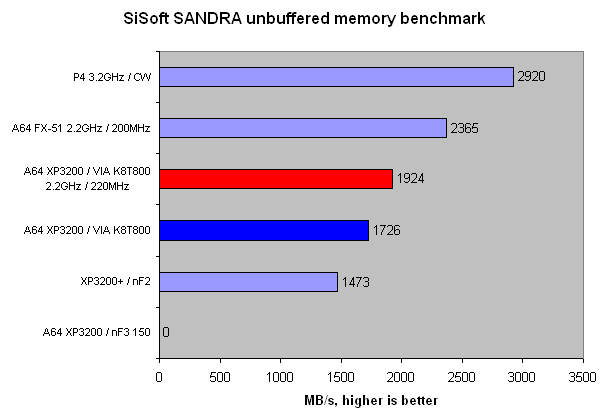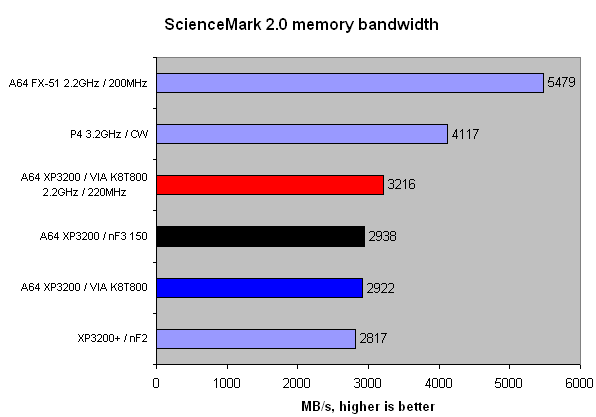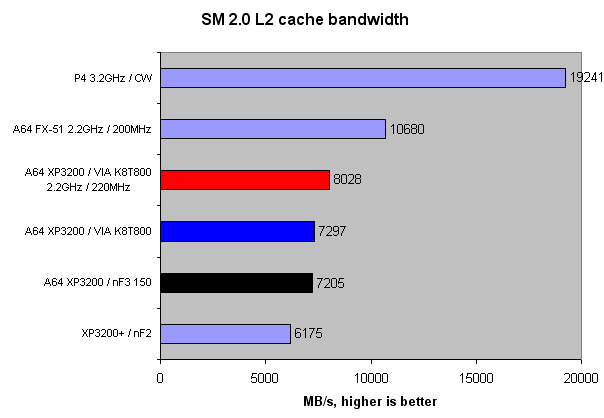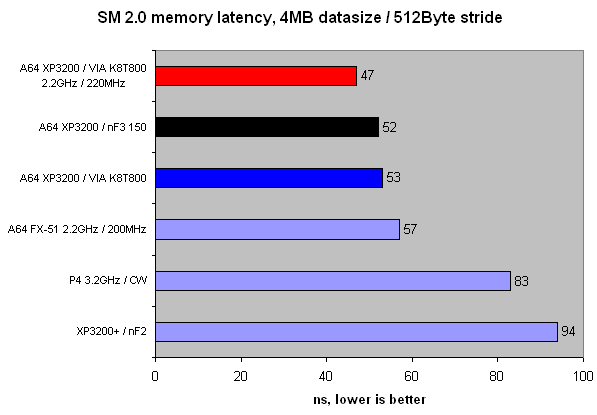Memory benchmarks
Banging the benchmark drum with SiSoft SANDRA's unbuffered memory benchmark. The EPoX 8HDA3+ (VIA K8T800) default benchmarks are in dark blue, the overclocked 8HDA3+'s are in red and the nForce3 150's in black.

First things first. The Shuttle nForce3 150 simply wouldn't run the benchmark. It was attempted at least a dozen times and each time SANDRA froze and locked the system. A reboot was necessary to get back to a working desktop. Don't let that take away from the impressive scores posted by the EPoX K8T800 board. Over 1.7GB/s of unbuffered bandwidth from a single-channel design is outstanding.

As another memory benchmarking tool, ScienceMark 2.0 was employed. Here, the Athlon FX-51 is streets ahead of the Pentium 4, and both the Clawhammer-based boards put up decent showings.

ScienceMark 2 also has the ability to measure L2 cache bandwidth. Having x amount of L2 cache in itself isn't an indicator of true performance. The speed of the cache is a crucial factor. We see that both the Athlon 64 3200+ has an improved L2 cache bandwidth when compared to the XP3200+ Barton, and the FX-51 is better still. It's about time AMD's CPUs started making inroads into Intel's excellent L2 cache speed.

A fast, large L2 cache helps in memory intensive tasks. That much is plainly obvious. Having an extremely low latency memory controller will contribute too. ScienceMark 2.0 provides clock latency information that can be translated to nanosecond delays if overall clock speed is taken into account. This is exactly the situation on which on on-die memory controller will offer a significant performance advantage over a discrete North Bridge controller. A 4MB data block and a 512-byte stride size are used to ensure that performance is measured off CPU cache. A standard Athlon 64 3200+'s memory latency is almost half that of an nForce2. Both the nForce3 and K8T800 are within touching distance of one another. The overclocked K8T800 provides some of the lowest latency access we've been witness to.
What the above graphs seek to show you, the reader, is that while the Athlon 64 3200+ may not have the clock speed to match the Barton XP3200, the combination of a faster L2 cache, extremely low latency memory controller, and decent chipset implementations should make is score big in most of our real-world benchmarks. Let's find out.









